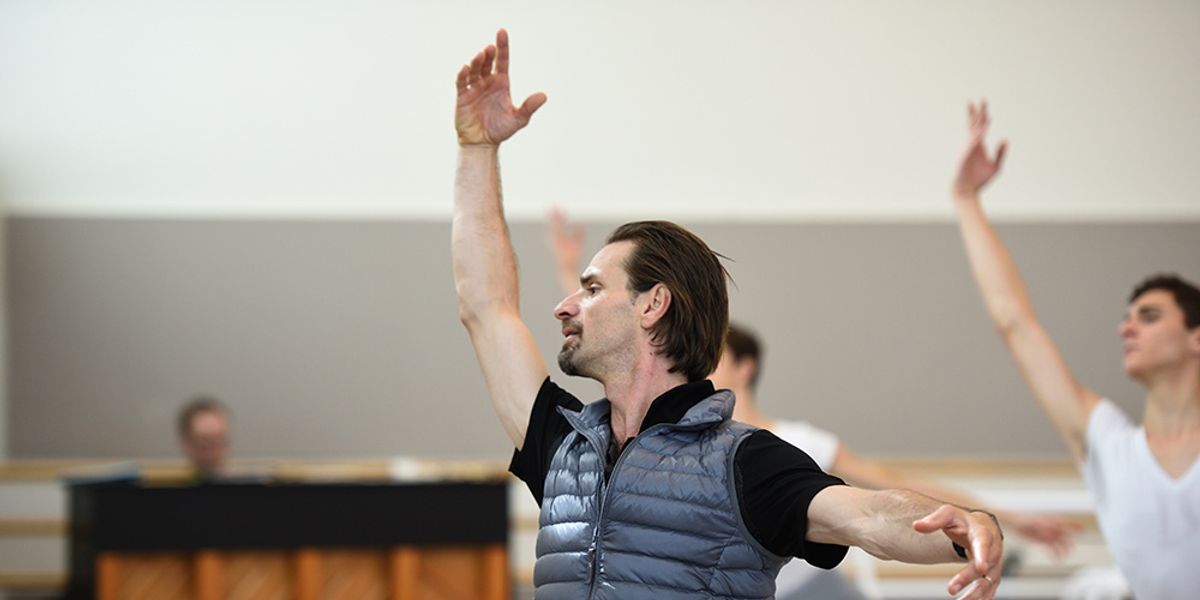7 Technique Resolutions Your Teacher Wishes You'd Make
A new year calls for a new approach to your training. As you make your resolutions for 2018, think about the corrections you hear most often. Now is the perfect time to address these issues and set realistic goals to fix them. Not sure what to tackle first? These seven resolutions master teachers wish you’d make will help you start the year off on the right foot.
1. Use your eyes.
It’s easy to get stuck in the mirror and constantly analyze yourself. But keeping your gaze glued to the front means you’re not using épaulement efficiently or focusing your eyes. “It can be a bad habit,” says Pascal Molat, trainee program assistant at San Francisco Ballet School. “The head is the heaviest part of the body, so if you direct the energy with the eyes, the position will be correct.” Your head should coordinate with port de bras from the beginning of barre, says Molat. “What you do there relates to what happens in center.”
2. Engage your core.
Core stability helps you move stronger, faster and in one piece. “Many dancers start to move before they’ve engaged their core,” says Winifred Haun, modern teacher at Hubbard Street Dance Chicago. To build a better connection to your core, supplement your training with Pilates, or simply hold a plank position for 30 seconds before class or a performance.
3. Don’t cheat turn preparations.
To achieve a good preparation for pirouettes, avoid these three common mistakes: losing turnout on the supporting leg, doing a double plié and swinging the side arm back behind the body. “The body weight should be more on the front leg than the back leg,” says Molat. “Take a nice plié that pushes down to go up.” He suggests practicing slow quarter and half turns from fourth and fifth to make sure the mechanics are correct. “This exercise, done very slowly and many times, will help you build good muscle memory.”
4. Be positive.
Incorporate positive thinking, not just physical training, into your daily practice. “Don’t judge yourself,” says Sekou McMiller, a New York–based choreographer and teacher who specializes in Afro-Latin dance. “It doesn’t allow you to retain notes. Be okay with what you don’t know, and be willing to receive information.” If you’re having a problem with a particular jump, for example, don’t let it affect the entire combination. Allow yourself the space and time to make mistakes—and learn from them.
5. Lift your arches.
“Don’t pronate,” says Haun. “When you keep your arches slightly lifted away from the floor, you engage your turnout muscles around the backs of the legs.” Think of having all 10 toes connected to the floor so that you don’t roll forward and put stress on the knees. “In fourth position plié before a turn, for example, make sure your feet are fully engaged,” she says. “This helps your turnout, which helps your balance, which helps your turn!”
6. Clean up your grand jeté.
Keep your heels forward as you take off for grand jeté. “If you’re going to the right, make sure the left shoulder is over the left hip, and don’t anticipate the jump,” says Molat. Instead of turning your whole body to face the corner, keep the left shoulder open as long as possible. This opposition in the upper body will create better propulsion, making your jump higher, instead of pushing you forward in one lateral direction.
7. Approach plié as a movement.
Plié should be an action with resistance, says McMiller. “Sometimes a dancer will hold a bent knee position, but no work is happening. Plié should support what you’re doing, both rhythmically and technically.” Find your relationship with gravity (resist going down, and push the floor away to go up) and then start exploring how you can interact with it.




